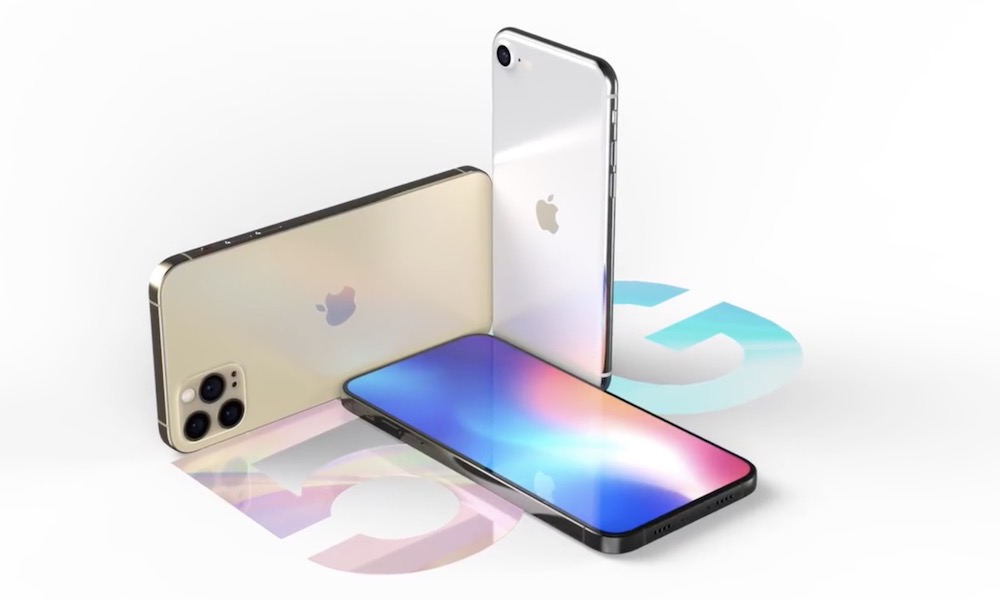The Ultra-Fast mmWave 5G iPhone May Not Arrive This Fall
 Credit: EverythingApplePro
Credit: EverythingAppleProToggle Dark Mode
The predicted timeframe for Apple’s 5G iPhone models has been all over the place in recent months, and while this is no doubt in large part a result of the uncertainty stemming from the ongoing global pandemic, the fact that Apple is also facing new challenges in building its first 5G iPhone probably isn’t helping either.
While most recent reports suggest that there’s a good chance we’ll still see a 5G iPhone this year, with production of the new A14 chip on track and Apple supposedly readying the first production prototypes, there’s still been some doubt as to the exact timing, with suggestions that the new iPhone release, which normally lands in September, could be delayed anywhere from this October until early 2021.
There’s also the possibility that Apple may only delay some models, with another recent report suggesting that the 6.7-inch iPhone 12 Pro might see an October launch, while the other non-Pro models could land as expected in September, and now the same analyst behind that report has followed it up with the suggestion that the first set of iPhone models may not feature the expected ultra-fast mmWave 5G technology.
Antenna Problems
In an investor note shared by MacRumors, Jeff Pu of Chinese investor firm GF Securities has revealed that Apple may be experiencing unanticipated problems with its antenna-in-package (AiP) models required by the mmWave version, which could affect the launch schedule of that particular model. The report notes that the new AiP may be consuming more power than Apple originally expected.
This report is also backed up by Barclays analysts Blayne Curtis and Thomas O’Malley, who have indicated that “recent data points” suggested that Apple may not be able to ship mmWave iPhones this year, although unlike Pu, they didn’t elaborate on what those “data points” were. It’s also worth mentioning that Pu released a separate note this week suggesting that the 5G 12.9-inch iPad Pro was facing similar delays, although in that case due to challenges with the new Mini-LED display technology.
Interestingly, this isn’t the first time we’ve heard this. Back in early January, long before the novel coronavirus pandemic was expected to be a factor, Mehdi Hosseini of Susequehanna also said that mmWave iPhones may not launch until January 2021. Hosseini’s comments, which also pointed to challenges with the AiP module, suggested that Apple would delay the mmWave 5G models, but didn’t necessarily rule out the release of the sub-6GHz versions on schedule.
Hosseini’s report was refuted by the more reliable veteran analyst Ming-Chi Kuo, who reiterated his original prediction that Apple would have both the sub-6GHz and mmWave-capable versions of the iPhone available at the same time. Kuo has previously stated that while Apple would launch sub-6GHz models worldwide, those released in the United States, Canada, Japan, Korea, and the United Kingdom would also include the necessary antennas and hardware for the considerably faster mmWave technology.
What This Means
Of course, all of these predictions came long before the global health crisis slowed things down, and as much as the Chinese supply chain insists that it’s ready to begin producing the new iPhone 12 models, aspects like the AiP design that require more support, testing, and validation from Apple’s engineers could create delays due to the inability of those teams to actually get on site at Chinese manufacturing facilities.
Even if the mmWave version of the 5G iPhone does get delayed into 2021, however, it may not have a significant impact, as mmWave coverage still remains limited to a few major urban centers, and mostly in the downtown cores and business districts in those places where it is available. Support for the sub-6GHz 5G technology is far more critical, since that’s what’s being deployed by carriers around the world, and offers much better range and building penetration. By contrast, while mmWave is significantly faster, offering speeds well upwards of 1Gbps, it requires your iPhone to be within a few hundred meters of an mmWave transceiver.
At the end of the day, mmWave support will largely be a marketing checkbox for Apple for now, as it’s likely most iPhone users won’t be able to take advantage of the faster speeds anyway, even if they have mmWave coverage available. Sub-6GHz speeds can easily peak at 500Mbps, which is more than enough for most mobile data use, although once mmWave networks are more widely deployed they will offer advantages beyond speeds, such as lower interference and reduced network congestion.
[The information provided in this article has NOT been confirmed by Apple and may be speculation. Provided details may not be factual. Take all rumors, tech or otherwise, with a grain of salt.]






